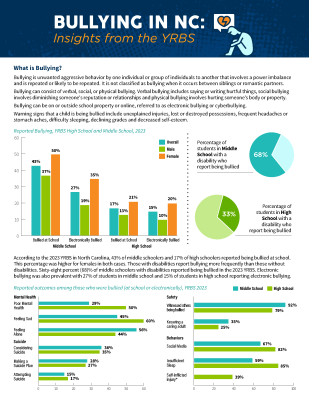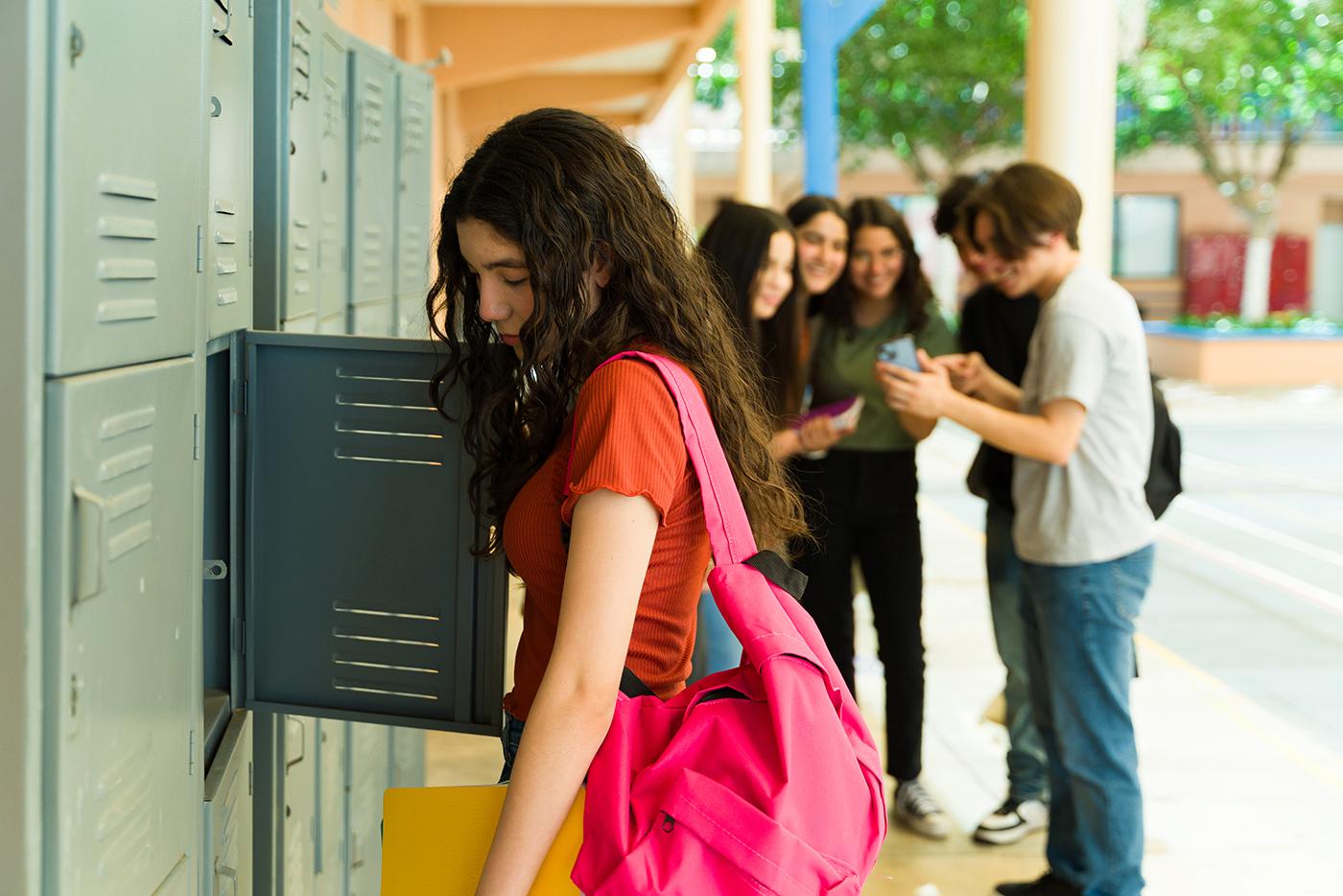Students are back in classrooms across NC, bringing new routines, friendships and challenges.
One challenge too many students face is bullying. It's more than "kids being kids." Bullying can affect learning, safety and health.
With awareness and action, schools, parents and students can work together to spot it and stop it.
What Bulling Looks Like
Bullying is unwanted, aggressive behavior that often occurs repeatedly. It can be:
- Verbal bullying: Teasing, name-calling, threats
- Social bullying: Spreading rumors, leaving someone out, embarrassing someone
- Physical bullying: Hitting, kicking or pushing, or damaging belongings
- Cyberbullying: Using texts, social media or other digital platforms to hurt or intimidate

How Common is Bullying?
The 2023 Youth Risk Behavior Survey (YBRS) shows that bullying is still a big issue in NC schools:
- It’s more common in middle school (43% report being bullied) but also happens in high school (17% report being bullied).
- Many also report bullying through phones or social media.
- Some groups, including girls and students with disabilities, report bullying more frequently.
Why It Matters
Bullying can lead to:
- Stress, anxiety and depression
- Trouble sleeping or concentrating
- Stomachaches or headaches
- Lower grades or missed school
- Thoughts and acts of self-harm and suicide
What You Can Do This School Year
Parents and caregivers:
- Talk regularly with your child about their school day.
- Look for changes in behavior, friends or school performance.
- Teach respect and kindness at home.
Students:
- Don't join in on bullying or gossip.
- Support classmates who are being bullied.
- Report bullying to a teacher, counselor or another trusted adult.
Schools and communities:
- Set clear expectations that bullying won't be tolerated.
- Create safe, welcoming spaces where all students belong.
- Use programs that build empathy and teach problem-solving.

